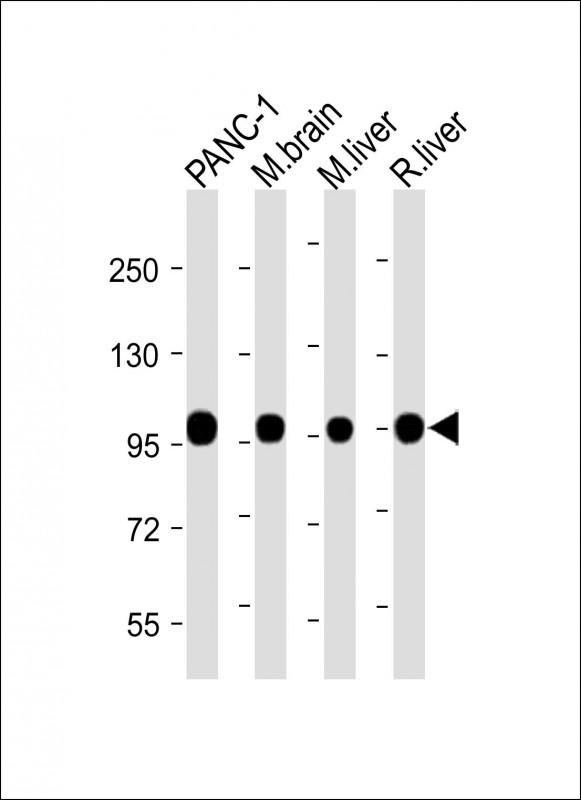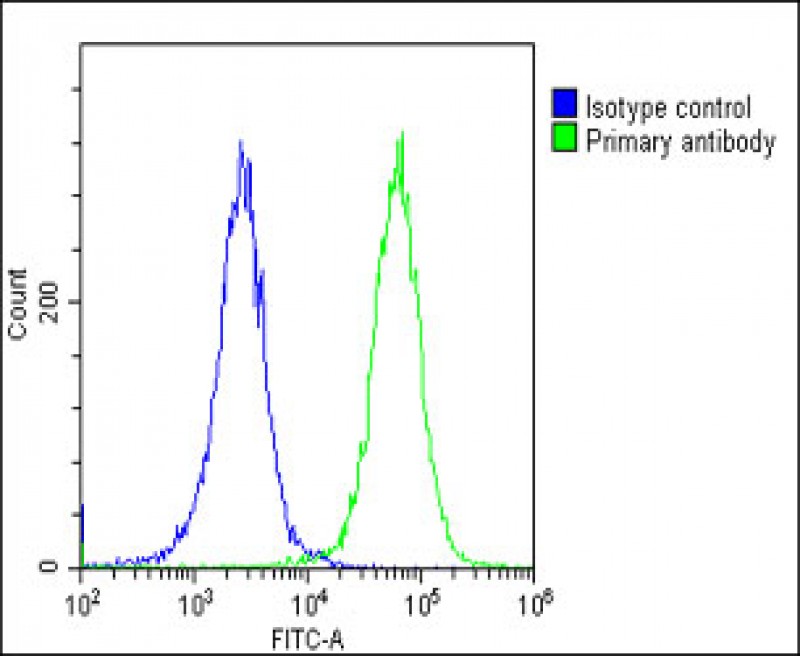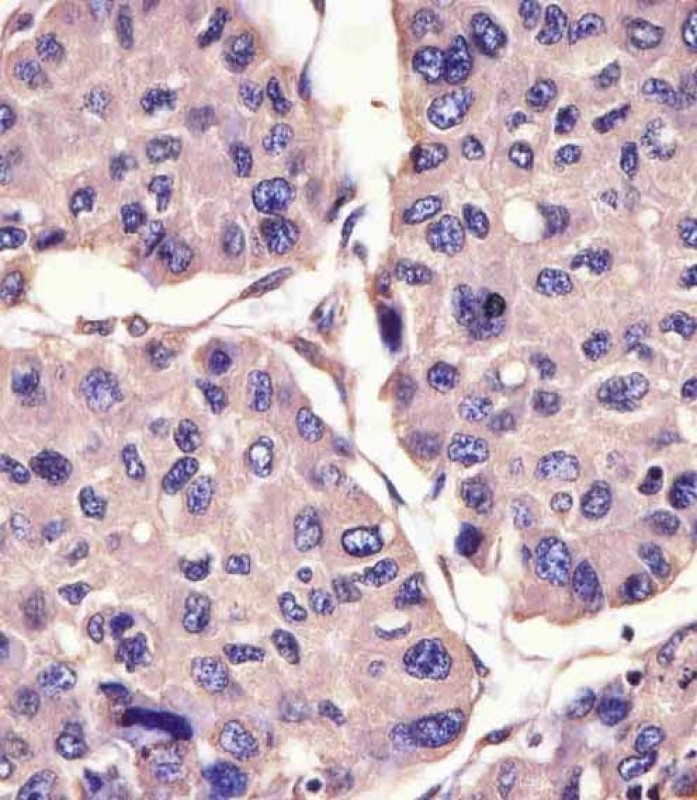


| WB | 1/2000 | Human,Mouse,Rat |
| IF | 咨询技术 | Human,Mouse,Rat |
| IHC | 1/100-1/500 | Human,Mouse,Rat |
| ICC | 技术咨询 | Human,Mouse,Rat |
| FCM | 1/25 | Human,Mouse,Rat |
| Elisa | 咨询技术 | Human,Mouse,Rat |
| Aliases | Calnexin, IP90, Major histocompatibility complex class I antigen-binding protein p88, p90, CANX |
| Entrez GeneID | 821 |
| WB Predicted band size | 67.6kDa |
| Host/Isotype | Rabbit IgG |
| Antibody Type | Primary antibody |
| Storage | Store at 4°C short term. Aliquot and store at -20°C long term. Avoid freeze/thaw cycles. |
| Species Reactivity | Human, Mouse, Rat |
| Immunogen | This CANX antibody is generated from a rabbit immunized with a KLH conjugated synthetic peptide between 560-592 amino acids from human CANX. |
+ +
以下是3篇与CANX(Calnexin)抗体相关的代表性文献摘要,供参考:
---
1. **文献名称**:Calnexin: a membrane-bound chaperone of the endoplasmic reticulum
**作者**:Helenius A, et al.
**摘要**:该综述系统总结了Calnexin在内质网中的分子伴侣功能,包括其参与新合成糖蛋白的折叠与质量控制机制。研究通过免疫沉淀和Western blot(使用CANX抗体)验证了其与未折叠蛋白的相互作用。
---
2. **文献名称**:Role of calnexin in hepatitis C virus envelope glycoprotein biogenesis
**作者**:Choukhi A, et al.
**摘要**:本研究利用CANX抗体进行免疫荧光共定位实验,发现Calnexin与HCV包膜糖蛋白E1/E2在内质网中共定位,证明其通过调控病毒蛋白正确折叠影响HCV颗粒组装。
---
3. **文献名称**:Calnexin silencing suppresses breast tumor progression by enhancing anticancer immunity
**作者**:Liang Y, et al.
**摘要**:通过免疫组化(使用CANX抗体)分析乳腺癌组织发现,Calnexin高表达与患者预后不良相关。基因沉默实验表明,Calnexin通过调控内质网应激信号通路影响肿瘤免疫微环境。
---
4. **文献名称**:Specificity of antibodies for the detection of calnexin in mammalian tissues
**作者**:Williams DB, et al.
**摘要**:该研究系统评价了多种商品化CANX抗体的特异性,通过敲除细胞系和质谱验证,明确了特定抗体在人和小鼠组织中的交叉反应性及适用实验场景(如免疫印迹、免疫荧光)。
---
如需具体文献的DOI或年份,可进一步补充关键词或研究背景。
CANX (Calnexin) is a key endoplasmic reticulum (ER)-resident chaperone protein critical for protein folding and quality control. It primarily assists in the structural maturation of newly synthesized glycoproteins by binding to monoglucosylated N-linked glycans via its lectin domain. CANX also interacts with the ER oxidoreductase ERP57 to facilitate disulfide bond formation. As a component of the calnexin/calreticulin cycle, it ensures proper folding of proteins entering the secretory pathway, retaining misfolded proteins for ER-associated degradation (ERAD).
CANX antibodies are widely used in research to study ER stress, protein trafficking, and cellular responses to unfolded proteins. These antibodies enable detection of CANX in techniques like Western blotting, immunofluorescence, and immunoprecipitation, serving as an ER marker in subcellular localization studies. They also help investigate CANX's role in diseases, including cancer (where overexpression is linked to metastasis), neurodegenerative disorders (e.g., Alzheimer’s), and viral infections (e.g., HCV, HIV), where viral proteins exploit CANX for replication. Commercially available CANX antibodies are typically raised against conserved epitopes, with host species including mouse, rabbit, and rat. Validation often involves knockout cell lines to confirm specificity. Researchers rely on these tools to explore ER homeostasis, adaptive stress pathways, and therapeutic targets related to proteostasis imbalances.
×